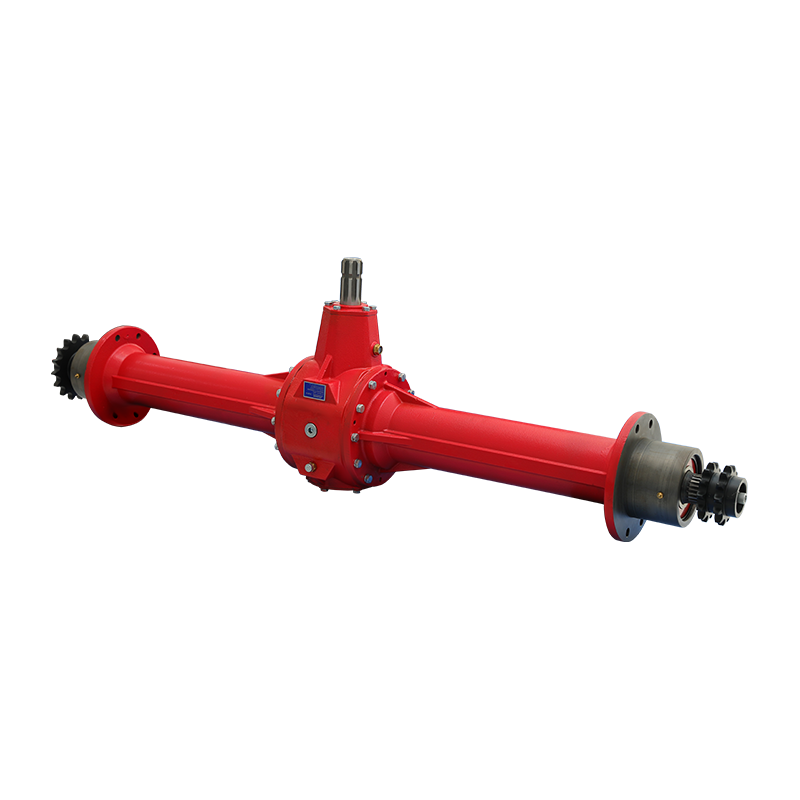KLF15 Hydraulic drive gearbox for Seeder Machine
Cat:Fertilizer Seeder Type Gearbox
This product is used for the hydraulic drive gearbox of the Seeder Machine, which varies according to the use occasion. There are different models, na...
See DetailsThe non-traction large round baler gearbox is a vital component of modern agricultural machinery. It plays a critical role in transmitting power from the tractor to the baler, enabling efficient operation during hay or straw baling. Proper maintenance of the gearbox, particularly cleaning, is essential to ensure longevity, avoid unexpected downtime, and maintain optimal performance. However, cleaning a non-traction large round baler gearbox requires caution. Improper cleaning can lead to contamination, corrosion, or mechanical damage.
Before diving into cleaning techniques, it’s important to understand what a non-traction large round baler gearbox is and how it functions. Unlike traction gearboxes, which are designed to transfer power to the wheels for movement, a non-traction gearbox mainly transmits rotational power to the baler mechanisms. It contains gears, shafts, bearings, and seals that work together to drive the rollers, belts, or chains responsible for forming the round bale.
The gearbox typically operates under heavy loads and in environments prone to dust, dirt, crop residues, and moisture. Over time, debris and residue can accumulate around the housing, on external surfaces, and sometimes in vents or cooling passages, potentially affecting performance.
Cleaning a non-traction large round baler gearbox is not just about aesthetics. Several functional reasons justify regular maintenance cleaning:
Before cleaning a gearbox, preparation is critical. Follow these steps to avoid accidental damage:
Read the Manufacturer’s Manual: Always consult the baler’s manual for specific cleaning guidelines. Some gearboxes may have coatings, vent plugs, or inspection ports that require special attention.
Gather the Right Tools and Supplies:
Safety First: Disconnect the tractor from the baler and ensure all moving parts have come to a complete stop. Lock out or disable the power source if possible.

Start by removing large debris from the gearbox exterior. Use a soft brush or cloth to sweep away dirt, straw, and hay residues. Avoid using metal brushes or hard scrapers, as these can scratch or damage the gearbox housing.
If there is built-up grease or stubborn residue, apply a non-corrosive, mild degreasing solution. Avoid harsh chemicals that may attack seals, gaskets, or painted surfaces. Apply the solution sparingly and let it sit for a few minutes to loosen grime.
Gently wipe or brush the gearbox surface to remove dissolved residue. Pay special attention to corners, seams, and vent areas where dirt tends to accumulate. For areas that are difficult to reach, use small paintbrushes or cotton swabs.
If available, compressed air can help remove dust and dirt from crevices. Ensure the pressure is moderate to avoid damaging seals or forcing debris into gear teeth. Always blow air from the outside toward the edges, not directly into bearings or vent holes.
While cleaning, inspect the gearbox seals, bolts, and mounting points. Look for oil leaks, cracks, or loose hardware. Catching potential issues early can prevent damage during operation.
After cleaning, wipe the gearbox dry with a lint-free cloth. Avoid leaving moisture on the surface, which can promote rust or corrosion. In humid environments, applying a thin layer of light machine oil to exposed metal surfaces can provide additional protection.
Cleaning a non-traction large round baler gearbox improperly can do more harm than good. Avoid these common mistakes:
Beyond cleaning, a few additional maintenance practices can prolong the life of your non-traction large round baler gearbox:
Cleaning a non-traction large round baler gearbox is a critical maintenance task that supports efficient operation, reduces the risk of mechanical failure, and extends equipment life. By following careful, step-by-step procedures—removing debris, using mild cleaners, inspecting seals, and avoiding harsh methods—operators can safely maintain their gearboxes without causing damage. Regular maintenance, combined with careful cleaning, helps ensure that the baler performs reliably during peak agricultural seasons.
Taking the time to clean your gearbox properly is an investment in the longevity and efficiency of your equipment. With proper care, a non-traction large round baler gearbox can continue to operate smoothly for many years, supporting the critical task of hay and straw baling with minimal downtime.